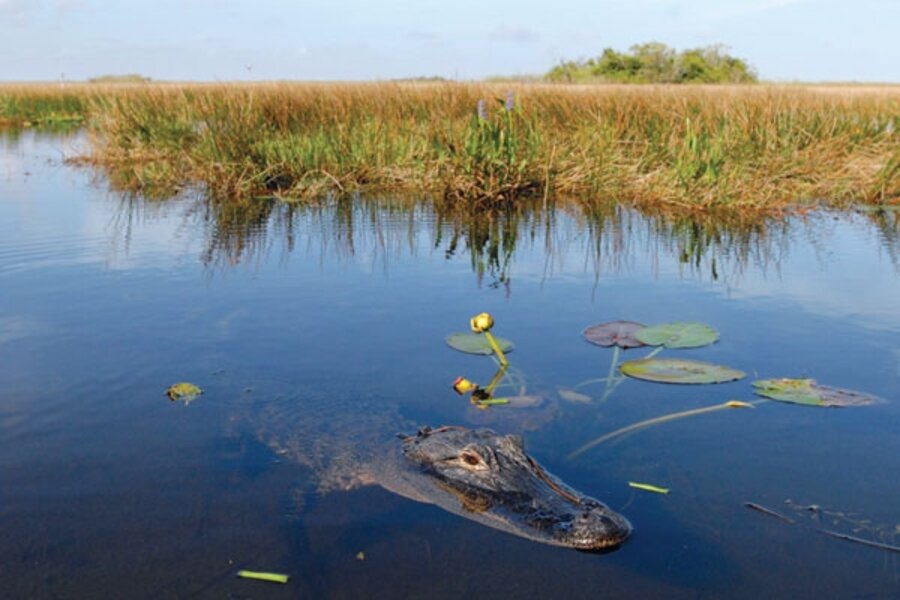Our best guess about global warming may be wrong
Loading...
Fifty-five million years ago, the world was a much warmer place. The poles were ice-free year-round. Palm trees grew in Alaska. Forests stretched right into the Arctic Circle.
There, swamps like those in today’s southeastern United States hosted alligators, snakes, and giant tortoises.
Scientists call this time in Earth’s history the Eocene, the dawn of the age of mammals. And climatologists have naturally taken a keen interest in how it began.
They know that a dramatic spike in carbon dioxide associated with rapid climate change kicked off the epoch – called the “Paleocene-Eocene Thermal Maximum” (PETM). But what scientists don’t understand about the PETM may hold the most relevant lessons for where the world’s climate is headed today.
So far, scientists have been unable to reproduce the PETM in a climate model. In order to get the climate they suspect existed, they have to crank up carbon dioxide far beyond what they think was actually the case.
They’re missing something – and that something may be key to understanding what happens after atmospheric CO2 increases beyond an unknown threshold. At some point, rising CO2 may trigger something else that further warms the climate. In other words, we may have significantly underestimated the effects of the CO2 now being released into the atmosphere. If the Eocene is any indication, the world is probably in for more warming than suspected.
A new study in the journal Nature highlights the mystery. Just before the PETM, CO2 levels were already gradually rising. Then, in a geological instant – a few thousand years – average global temperatures rose about 7 degrees C (13 degrees F.).
From chemical signatures found in ocean sediments, scientists infer that carbon dioxide increased by some 70 percent during the PETM. But when they use that figure in their climate model, they can produce only half the warming they know occurred.
In an e-mail, Jerry Dickens of Rice University in Houston, coauthor of the study, posits three possible explanations:
1. Scientists don’t have the warming capacity of CO2 quite right; it’s actually higher than they now estimate.
2. The sensitivity of climate to rising CO2 is not linear. Maybe when certain conditions prevail, there’s more warming per carbon input than scientists now estimate.
3. Some additional positive feedback exists that’s triggered by high CO2, or associated warming, or both, but which scientists haven’t yet discovered.
The authors are leaning toward explanation No. 3. One oft-discussed possibility: methane hydrates. Methane is a potent greenhouse gas, more than 20 times more powerful than CO2. Methane “ice” forms naturally in seafloor sediments, mostly as a byproduct of microbial activity. A combination of deep-sea cold and immense pressure keeps it in solid form. But if the oceans warm beyond a certain point, those hydrates may melt, releasing stored carbon into the water and, eventually, the atmosphere.
There’s a fourth possibility, says James Zachos of the University of California at Santa Cruz, the study’s other coauthor. A warmer world has more swamps. “It’s something that’s hard to quantify, so it’s not built into most models.” But swamps, which existed in abundance during the Eocene, produce lots of methane.





